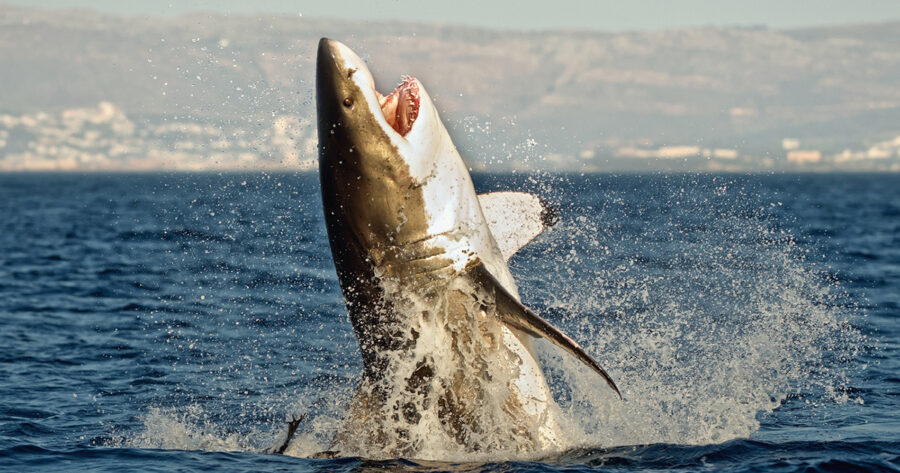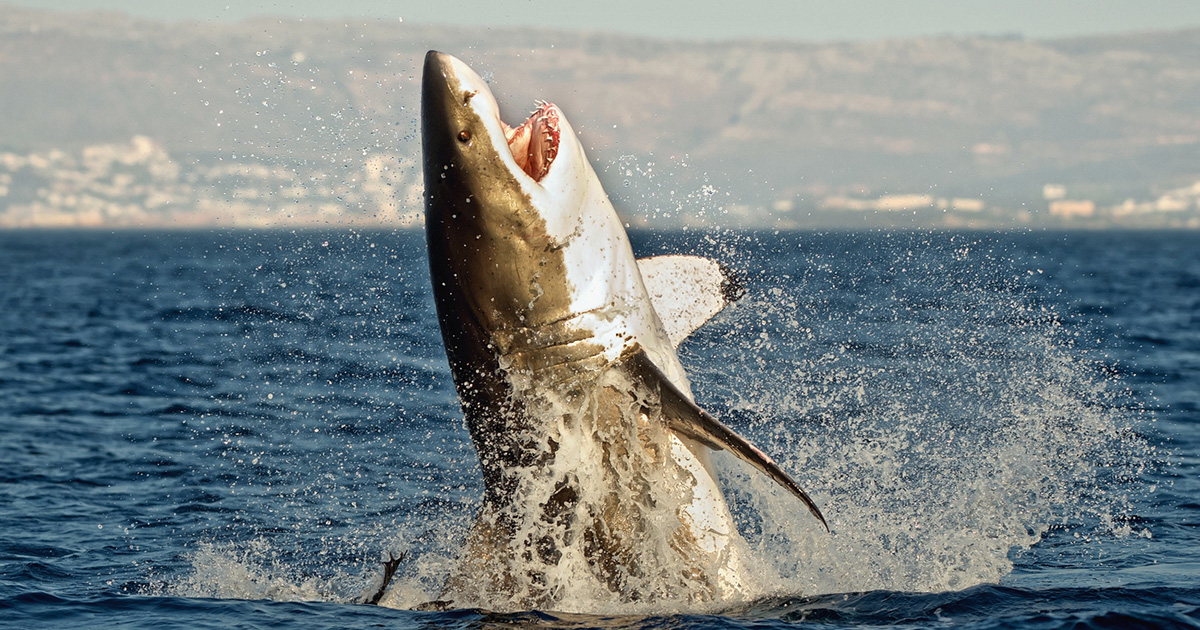
Killer Whales Kill Ninth Great White Shark in South Africa… for its Liver
A pair of Killer Whales (Orcas) are believed to have claimed their ninth victim (at the very least) after a Great White Shark, which had been brutally killed, was washed up on a beach in the Western Cape, South Africa. The rogue apex predators, who appear to work as a team, are believed to have […]

A pair of Killer Whales (Orcas) are believed to have claimed their ninth victim (at the very least) after a Great White Shark, which had been brutally killed, was washed up on a beach in the Western Cape, South Africa.
The rogue apex predators, who appear to work as a team, are believed to have been preying on Great Whites for seven years… feasting on their livers. Recent ground-breaking drone video footage showed their modus operandi, confirming speculation that the Orcas were eating Great White sharks for their liver.
Scientists are beginning to come to terms with the killer whales’ new behaviour, having studied the butchered carcasses of the sharks since the first in 2017.
The Killer Whales – known as Orcas – have developed a taste for the fatty highly nutritious livers, weighing up to 600lbs, inside the Great Whites.
And the black-and-white orcas have come up with a unique way of getting to their victims prized organ, launching repeated attacks until the shark is exhausted.
Then one orca dives under for the kill, attacking from beneath, with its serrated teeth ripping open the great white with surgical precision, just under the liver.
The organ falls free and the killer whales devour what to them is a delicacy. So far nine Great White Shark carcasses have washed up, minus their giant livers.
In the latest incident a butchered nine-foot female Great White was washed up at Mossel Bay, in the dawn surf at the tourist spot.
Local resident Cristiaan Stopforth said: “It was just so sad to see this amazing majestic animal lying there lifeless due to these Orcas – this is the second in two months.”
Marine biologist Alison Towner said: “In having to conduct necropsies on all shark carcasses in South Africa it is sad and never gets any easier.”
VIEW PHOTOS HERE: (To use any of the text or photos, please contact Jamie Pyatt News Ltd.)
Photo 1: The jaws of a 9-foot Great White Shark which was killed after being attacked by Killer Whales for its liver.
Photo 2: A 9-foot long Great White Shark washed up dead at Mossel Bay beach, South Africa, after being attacked and having its liver ripped out by Killer Whales.
Photo 3: The Great White Shark washed up dead at Mossel Bay beach, South Africa, after being attacked and having its liver ripped out by Killer Whales.
Photo 4: The jaws of a Great White Shark which was killed after being attacked by Killer Whales for its liver.
Photo 5: A Great White Shark which can grow up to 2000kg’s and 20 feet long and swim at 35mph is usually one of the most fearsome predators in the ocean
Photo 6: A 12-foot-Great White Shark washed up in 2019 on a South African shore after havings it’s liver ripped out by a Killer Whale.
Photo 7: Great White Shark
The Killer Whales, when they strike, bite a large slit out of the side and belly of the Great White and suck out the fatty liver, leaving the shark to die.
The predatory pair thought to be responsible for all the attacks are known as Port & Starboard. The pair – who have become infamous – are named after the side of their body that their dorsal fins flip over.
They appear to have spurned their natural prey like seals, squids and fish after developing a taste for the shark livers and hunt out the Great Whites (which were made internationally famous by the film Jaws).
With nine Great Whites washed up, all between 8 and 14 feet and all suffering the same precision wounds, it is not known how many other Great Whites are killed out in deep water.
Scientist Alison of the Dyer Island Conservation Trust has spent much of her life studying Great Whites and the change in their habits; and has recorded their disappearance after attacks.
The constant threat of Orca’s Port & Starboard has seen the once prolific great white shark population of False Bay around Seal Island almost vanish, when before their numbers were plentiful.
The pattern is continuing up the South African east coast to the famous shark spotting area of Gansbaai, as the Killer Whales increase their territory… driving the Great White Sharks away.
Expert Alison said, when she published a study in the African Journal of Marine Science recently, that following an orca attack the remaining Great White Sharks took off for weeks or even months.
She said: ”We seem to be seeing a large scale avoidance strategy and the more the Orcas frequent these territorial sites then the longer the Great White Sharks will stay away.”
The carcass of the Great White Shark was taken away by the Department of Forestry, Fisheries & Environment to the nearby Dias Maritime Museum for scientific study and dissection.
It is thought there are between 350 and 550 Great White Sharks left along the South African coast but the activities of the Orca’s is upsetting the cage diving boats with the numbers down hugely.
WATCH Great White Shark washed up in Mossel Bay, South Africa, after Killer Whales’ Attack
WATCH Groundbreaking footage showing Killer Whales’ attacking and Killing Great White Shark
This ground-breaking video was filmed in Mossel Bay, by Christiaan Stopforth from @fanatics.drone
View this post on Instagram
To use any of the text, video or photos, please contact Jamie Pyatt News Ltd.
